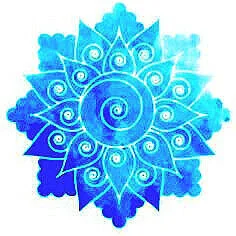The three doshas: Vata Pitta Kapha
Knowing your dosha, or mind-body-spirit constitution can help you achieve optimal health. We all have 3 doshas.
Discovering which is your primary dosha and which is out of balance is the gateway to your optimal health.
It is a practical and empowering pathway to learning to re-balance your mind, emotions, digestion, energy levels, health and well-being.
Recognizing that human beings are part of nature, Ayurveda describes three fundamental energies that govern our inner and outer environments: movement, transformation, and structure. Known in Sanskrit as Vata (wind or air), Pitta (fire) and Kapha (earth), these primary forces - the doshas - are responsible for the characteristics of our mind and body.
When we are born, our energetic constitution is in balance and that state of original wholeness is called prakruti. Prakruti represents our true nature. Opposite to prakruti, there is vikriti – our current energetic constitution, brought on by life’s trials and tribulations, which represents a degree of deviation from our balanced energetic state.
To stay healthy it is our duty to maintain our original energetic constitution – our prakruti.
Ayurvedic methods of prevention and healing strive to bring our bio-physiology back to its primordial balanced state because, according to Ayurveda, the imbalance of doshas results in disease.
Each individual has the characteristics of all 3 doshas, but in different proportions and it is these proportions that determine our physical and psychological traits. This is incredibly useful to know what ailment and disease tendencies we may have when out dominant dosha is aggravated.
VATA : the energy of motion
Elements: Air & Ether
The elements of vata dosha are both inherently light, dry, cold and mobile so not surprisingly, vata is the driving force responsible for everything in the body that moves, like breathing, emotions, absorption and secretion. Because of its mobility, vata represents the life energy that influences the other two doshas, that’s why aggravated vata is responsible for most illnesses.
Commonly, vata types have difficulty gaining weight. The vata personality is restless, adventurous, dreamy, bubbly & charismatic. The vata soul is creative, artistic & inspires others. It is quite difficult to pin down a vata type person because their nature is inherently mobile. They love movement, change & jump at the idea of trying new things. To some it may seem that vata types lack direction but to the vata type person, that is exactly what makes them feel alive.
When Vata is unbalanced, when there is too much movement in the system, a person tends to experience anxiety, insomnia and difficulty focusing. Vata is seated in the colon and one of the main symptoms of drying vata aggravation is excess gas and constipation in the lower bowel. Other symptoms of excess vata include dry skin and hair, wrinkles, menstrual cycle issues and cracking joints. On the mental plane, aggravated vata is visible as bad moods, nervousness and depression. Low self-esteem is present, as well as loss of memory.
Qualities that support Vata
Warmth
Moisture
Calm with grounding food & daily practices
Tips for balancing Vata
Avoid raw and cold foods.
Eat warm, unctuous (slightly oily), well-spiced foods prepared in healthy oils such as ghee. Herbs like cumin, ginger and cinnamon are excellent for pacifying vata.
Drink warm lemon ginger water first thing in the morning to promote peristaltic action in the large intestine.
Stay warm. Avoid cold, dry environments wherever possible.
Routine is key for keeping vata in balance, thus developing daily routines is necessary.
Opt for lighter physical exercise such as walking
Create a yoga practice that emphasises grounding movement through postures like Tree Pose and Child’s Pose. Move slowly and gently.
Cultivate a daily meditation practice. Start with just 5 minutes a day and slowly move towards 20-30 minutes per day.
Take warm baths with essential oils of vetiver, lavender and sandalwood to calm the nervous system and mental body.
Give yourself a self-massage daily (abhyanga) with black sesame oil or Vata Oil to keep the joints, muscle and skin tissue supple and moisturised.
Eat 6 soaked mashed prunes each morning to avoid constipation and support healthy daily elimination.
PITTA - the energy of transformation
Elements: Fire & Water
The qualities of fire and water are inherently hot, light, sharp, oily and flowing which are mirrored in their physical, mental and emotional bodies. Pitta combines seemingly contradictory elements fire & water, but as it is responsible for metabolic activity in the body, those two elements complement each other, keeping each other in line when needed. Its primary function is transformation. Pitta is the force that controls the endocrine system, hormones, digestion, body temperature, immunity, hunger, thirst and skin quality.
Pitta manifests in the physical body through a medium frame and generally an athletic build, making it easy for this body type to sustain muscle tone. In the mind, pitta dosha manifests as sharpness and intellect. A pitta personality tends to be a natural-born leader, who is disciplined, passionate and courageous with a sharp, intellectual mind. To some, their clear communication can come off as sharp or curt and impatient. However, pitta types feel like they are just being clear and getting to the point. When they are in balance, they have a beautiful blend of the fire and water elements which displays in a powerful, compassionate nature, inspiring others to achieve their goals but when pitta is emotionally imbalanced they can be irritable, sharp, prone to conflicts and unbearable.
Its primary site is in the small intestine, then in the eyes, blood and lymph. Physical imbalance in pitta dosha manifests as excess heated conditions and emotions. The common signs of aggravated pitta are skin rashes, eye issues, heavy sweating, ulcers, fever, hyper-acidity, ulcers and inflammation.
Qualities that support Pitta
Coolness
Alkalising food
Calming environment & relaxing pastimes, downtime in nature
Tips for balancing Pitta
Avoid spicy, fried, overly oily foods, caffeine and alcohol.
Combine foods with herbs that will cool the digestive tract such as cumin, coriander, fennel and mint. Only small amount of black pepper or cinnamon.
Drink warm lemon water first thing in the morning to cleanse and detoxify the internal organs and skin.
Do a yoga practice that emphasises forward folds and twists to cool & calm. Move slowly and gently. Avoid heating yoga and heated yoga classes.
Cultivate a daily meditation practice. Start with just 5 minutes a day and slowly move towards 20-30 minutes per day.
Engage in calming activities like walks in nature and spending time with loved ones instead of competitive activities.
Use essential oils of peppermint, lavender and geranium to soothe and cool the nervous system & mental body.
Give yourself a self-massage daily with coconut oil or Pitta oil to keep the internal channels and skin tissue healthy and calm.
KAPHA - the force of stability
Elements: Earth & Water
Earth and water are both by nature, dense, heavy and cold; earth is also static. So kapha dosha is characterised by these qualities in their physical, mental and emotional being as well. Kapha dosha is the force of stability due to the grounded, stable elements that create it. Kapha intelligence is primarily seated in the lungs and it is responsible for lubricating and moisturising tissues, organs and joints. It defines our health and sustains our organism.
A kapha personality is sweet, loving, easy-going and loyal. They are the people at the party or social gathering making sure everyone else is okay. Kapha-types are also solid, steady and enjoy routine. They move more slowly, have open hearts and have a natural compassion for others.
When kapha is out of balance, in the physical body, they are prone to lethargy and weight-gain, respiratory problems, headaches and sluggish digestive issues. Imbalanced kapha skin manifests with excess oiliness, congestion, cystic acne, blackheads & large pores.
In the emotional body, stubbornness and attachment may become an issue.
Qualities that support Kapha
Movement
Warmth
Expression
Tips for balancing Kapha
Avoid processed sugars, oily and/or fried foods and all dairy. These foods will congest the digestive and respiratory tracts and skin.
Combine foods with spicy, dry and pungent herbs that will stimulate agni (your digestive fire). Herbs like cayenne, cinnamon and black pepper are ideal options.
Regular fasting by skipping dinner
Drink warm lemon ginger honey water first thing in the morning to cleanse and detoxify the channels and skin and increase agni.
Daily active exercise for at least ½ an hour. Cardio workouts are great for kapha-types.
Practice yoga that is flowing and heating. Bikram, Ashtanga and Vinyasa Yoga are ideal as well as rapid sun salutations and heart openers like Camel Pose and Fish Pose.
Practice the art of letting go. Clean out your closet, let go of attachments with people and things that are weighing you down.
Give yourself a self-massage daily with black sesame oil or Kapha Oil to keep the skin activated and circulation pumping.
Avoid daytime naps




